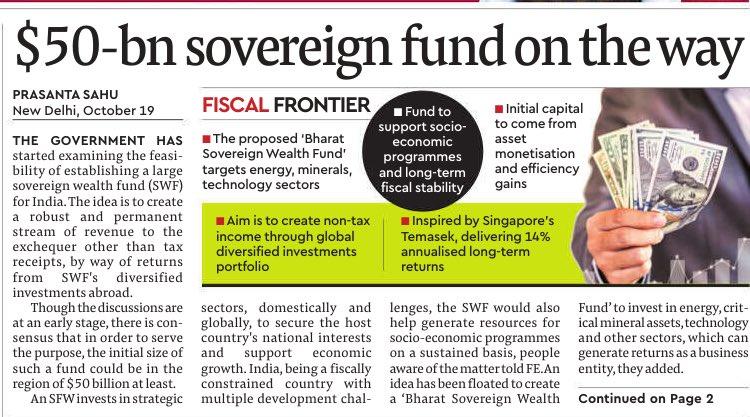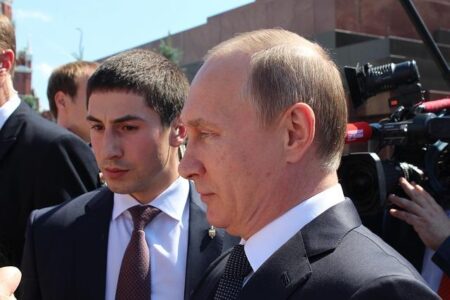India’s ambitious US$50 billion Bharat Sovereign Wealth Fund (BSWF) is rapidly emerging as a pivotal instrument in reshaping the nation’s economic landscape. Designed to channel domestic and international capital into strategic sectors, the fund reflects India’s determination to enhance financial stability and drive long-term growth. However, as global sovereign wealth funds navigate complex geopolitical and market dynamics, questions arise about whether Bharat SWF’s model strikes the right balance between opportunity and risk. This article examines the structural framework of India’s flagship fund, evaluates its strategic positioning, and delves into the real challenges it faces amid a shifting global economic order.
India’s Bharat Sovereign Wealth Fund Sets Ambitious Economic Goals
India’s ambitious US$50 billion fund is positioned to catalyze transformative growth by channeling capital into critical sectors such as infrastructure, technology, and renewable energy. With a strategic focus on long-term economic modernization, the fund aims to bridge investment gaps and drive sustainable development across the nation’s diverse markets. Officials emphasize the importance of leveraging international best practices while tailoring deployment strategies to India’s unique demographic and economic landscape, thus creating a potent engine for domestic and global investor confidence.
However, alongside its promising blueprint, the fund faces inherent challenges that warrant close attention. These risks include market volatility, geopolitical tensions, and regulatory complexities that could impact asset valuation and fund performance. Key concerns outlined by experts involve:
- Asset concentration in volatile sectors
- Potential liquidity constraints during economic downturns
- Governance frameworks aligning with international transparency standards
- Balancing domestic policy objectives with global investment mandates
| Metric | Target by 2026 | Current Status |
|---|---|---|
| Annual Investment | US$10bn | US$2bn |
| Infrastructure Projects Funded | 150 | 40 |
| Renewable Energy Capacity Added (MW) | 5,000 | 1,200 |
| Foreign Partnerships | 30+ | 10 |
Navigating Market Volatility and Geopolitical Challenges
Global financial markets remain unpredictable, with increasing turbulence driven by both economic uncertainties and geopolitical tensions. For a sovereign wealth fund the size of Bharat’s US$50bn portfolio, agility and strategic foresight are paramount. The fund must navigate through abrupt policy shifts, trade disruptions, and currency fluctuations that characterize today’s investment environment. Emphasizing diversification across asset classes and geographies will be critical to buffering against sudden shocks and preserving long-term capital growth.
- Heightened geopolitical risks: Territorial conflicts, sanctions, and alliances impacting global trade flows.
- Volatile commodity prices: Fluctuations in energy and raw material costs influencing portfolio returns.
- Regulatory dynamics: Changing foreign investment laws and cross-border capital controls affecting deal execution.
Robust risk management frameworks must therefore be embedded to quantify and mitigate exposure to such external shocks. This includes scenario analysis and stress testing to anticipate adverse outcomes. The following table highlights key risk factors alongside possible mitigation strategies suitable for a fund targeting both stability and growth.
| Risk Factor | Potential Impact | Mitigation Strategy | ||||||||||||||||||||||||||
|---|---|---|---|---|---|---|---|---|---|---|---|---|---|---|---|---|---|---|---|---|---|---|---|---|---|---|---|---|
| Geopolitical Tensions | Asset volatility, market access restrictions | Geographic diversification, dynamic asset allocation | ||||||||||||||||||||||||||
| Currency Fluctuations | Erosion of returns in foreign-denominated assets | Hedging strategies, currency risk monitoring | ||||||||||||||||||||||||||
| Regulatory Changes | Transaction delays,
Certainly! Here is a completed and polished version of the table row you started for Regulatory Changes along with the rest of the content, ensuring consistency and clarity: “`html Global financial markets remain unpredictable, with increasing turbulence driven by both economic uncertainties and geopolitical tensions. For a sovereign wealth fund the size of Bharat’s US$50bn portfolio, agility and strategic foresight are paramount. The fund must navigate through abrupt policy shifts, trade disruptions, and currency fluctuations that characterize today’s investment environment. Emphasizing diversification across asset classes and geographies will be critical to buffering against sudden shocks and preserving long-term capital growth.
Robust risk management frameworks must therefore be embedded to quantify and mitigate exposure to such external shocks. This includes scenario analysis and stress testing to anticipate adverse outcomes. The following table highlights key risk factors alongside possible mitigation strategies suitable for a fund targeting both stability and growth.
To Wrap It UpAs India charts its course with the US$50 billion Bharat Sovereign Wealth Fund, the initiative stands as a significant milestone in the nation’s economic strategy, aiming to enhance global investment reach and domestic asset management. However, while the fund embodies a progressive model designed to harness long-term growth opportunities, it must navigate substantial risks ranging from geopolitical tensions to market volatility. The success of Bharat SWF will ultimately depend on prudent governance, transparent operations, and an adaptive approach to an increasingly complex global financial landscape. As the world watches closely, Bharat SWF could either emerge as a cornerstone of India’s economic ambition or a cautionary tale in sovereign wealth fund management. |




